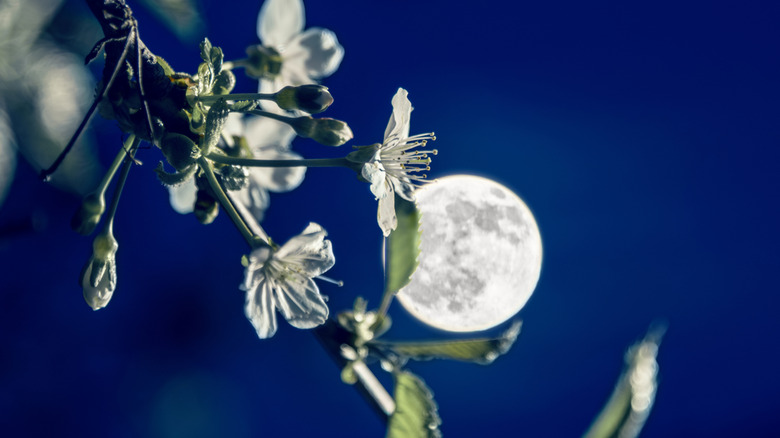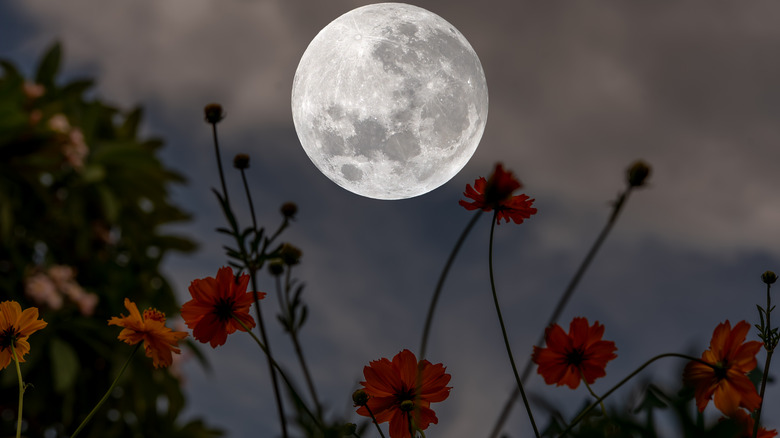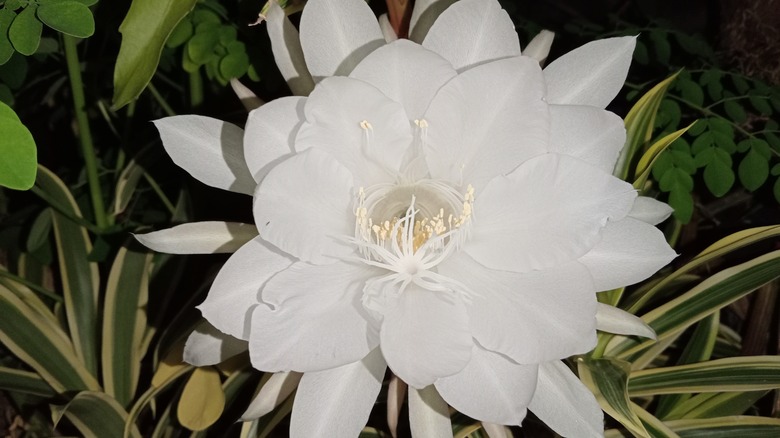What Is A Moon Garden? (& The Very Best Way To Design One)
Not everyone can enjoy the beauty of a garden during the day. Whether because of the heat in summer or due to a conflict with your work schedule, it might be easier to enjoy a floral garden in the evenings and at night. This is why a moon garden might be the perfect choice for you. But what is a moon garden?
As its name suggests, a moon garden is a garden that you're meant to enjoy by the light of the moon — a space created with both flowers that thrive in the moonlight and ones that are particularly visible under the light of the moon. There are also other features that bring this type of garden to life, including wind chimes, water features, and outdoor furniture. This type of garden allows your senses to experience more of the beauty of the garden.
Setting up a moon garden takes some planning. You want to create not only a space that's inviting but also one that capitalizes on the time of day when you'll be enjoying it most. Having fragrant blooms and flowers that glow under the moonlight is the best way to create an experience that will leave you wanting to head outside in the evenings. So how do we make this happen?
How to design your own moon garden
Knowing where you want to set up your moon garden is the first step in making it a success. You'll need a spot that actually gets plenty of light from the moon, so walking around after dark is necessary to determine how much moonlight your garden will actually receive. Pay attention to the sunlight in this area as well. Make sure there aren't any major obstructions, like trees or fences, blocking the light from hitting your flowers.
Planning your moon garden is also about the additional features that let you enjoy the experience. Consider planting your garden in a unique shape or around central focal points, such as a water feature, benches or chairs, or even a table. Wind chimes can add another layer of sound to the experience as well. Small solar lights are a great idea to keep your path illuminated and safe.
Moon gardens do not need to be overly large. The size will depend on what you incorporate into the design, including the flowers that bloom at night. Planning the types and layout of these flowers can help make your garden more of a paradise.
What to plant in your moon garden
Once you have planned out the space, it's time to pick the flowers. Not only are there a number of flowers that will shine in the moonlight due to their color, but there are also some that bloom at night that could work. Picking the right flowers for your garden is about the color of the blooms as well as the smell.
So what are some suggestions for a fragrant flower that will bloom by the light of the moon? You might want to consider the evening primrose (Oenothera biennis), night phlox (Zaluzianskya capensis), night-blooming jasmine (Cestrum nocturnum), or even tuberose (Polianthes tuberosa). These night bloomers emit strong fragrances that tend to attract evening pollinators, which is good for your garden and the environment.
If you're looking for flowers that look beautiful under moonlight, there are a number of options to choose from. The Shasta daisy (Leucanthemum × superbum), sweet alyssum (Lobularia maritima), and orlaya 'White Finch Lace' (Orlaya grandiflora) are all white flowers that seem to glow in the moonlight. A non-flowering plant that will bring the same glowing effect is the lamb's ear (Stachys byzantina). Adding in just a few flowers that bloom during the day but also shine at night can really help to transform your garden.


